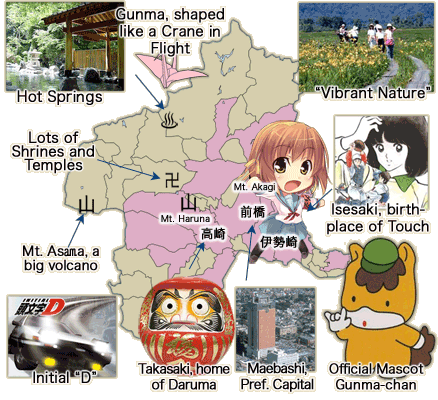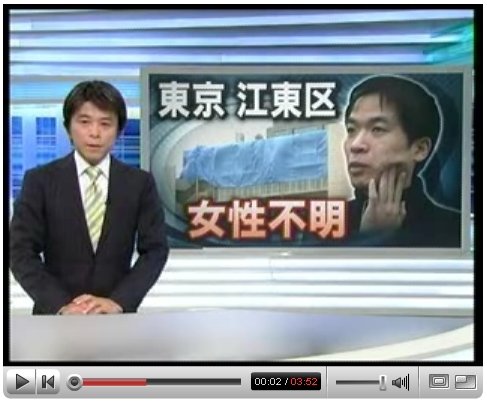J-List is based in Gunma Prefecture, a crane-shaped piece of land that’s located right in the center of Japan — the heso (belly button) of the country, as the locals like to say. Situated on the edge of the Kanto Plain, where Tokyo and Yokohama are, Gunma appears regularly in crime dramas after someone commits a murder needs a conveniently rural, mountainous place to dispose of the body. Because the name of Gunma is written with characters that mean “a herd of horses,” people in other parts of the country think there are lots of horses here, but it’s completely untrue — we don’t even have a horse racing track anymore. The primary cities in Gunma are Maebashi, the Prefectural capital, famous for wooden kokeshi dolls; Takasaki, a vibrant commercial city, although because it was never bombed during World War II the roads are noticeably narrower and more difficult to drive in; Ota, home of the Subaru corporation, and the old Nakajima Air Works, where Japanese Zeros were built; and our own Isesaki, famous (?) for J-List and for the photographer of Russian model Yulia Nova, who happens to live about 2 km from us. Virtually all the cities in Gunma are former castle towns, and almost without exception the City Offices are built on the grounds of the former castle ruins, which fulfills some kind of continuity with the past that I as an American can’t quite fathom, although it’s rather cool. In keeping with Japanese regional tradition, Gunma is famous for many things, including konnyaku, a gelatinous food made from yams that’s so firm that several elderly people a year choke on it and die, kara-kaze, the biting wind that blows over the mountains in the winter, and kakaa-denka, extremely strong-willed women (like my wife). Now you know a little bit more about Japan!

Our home prefecture of Gunma at a glance. Hot springs, vibrant nature, Daruma dolls: we’ve got it all.















